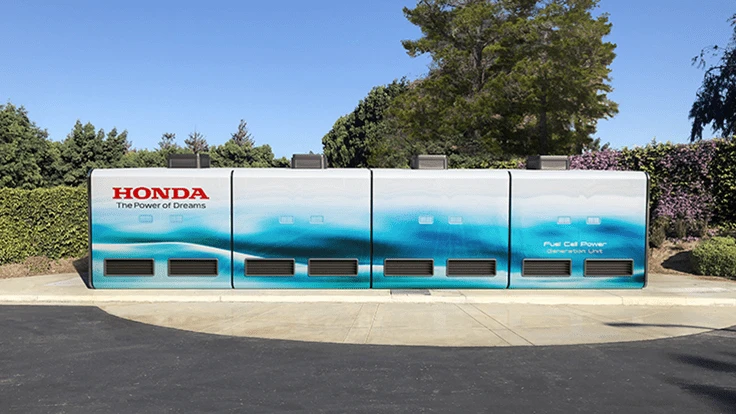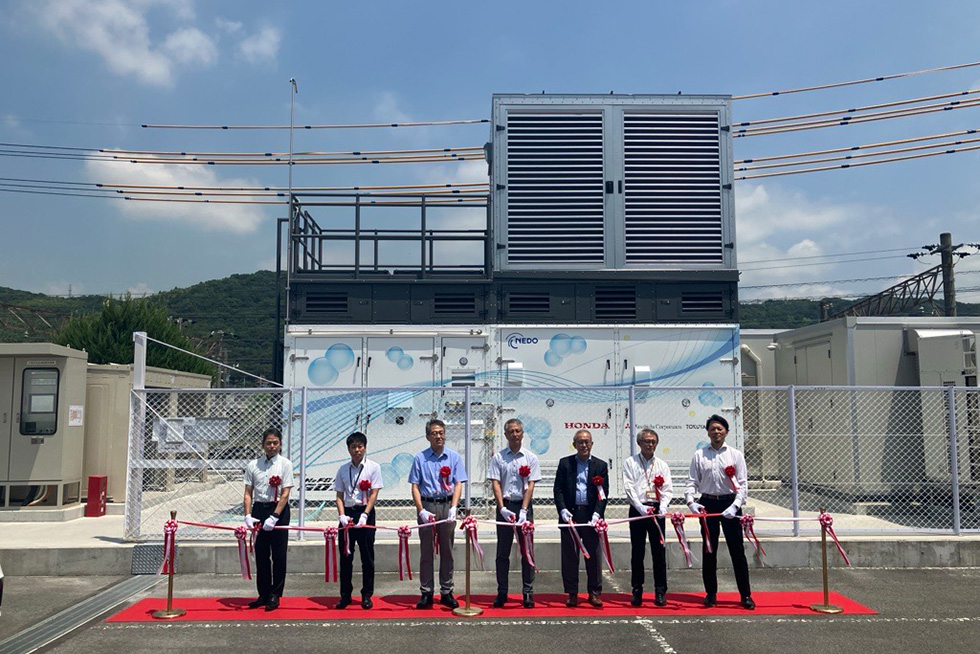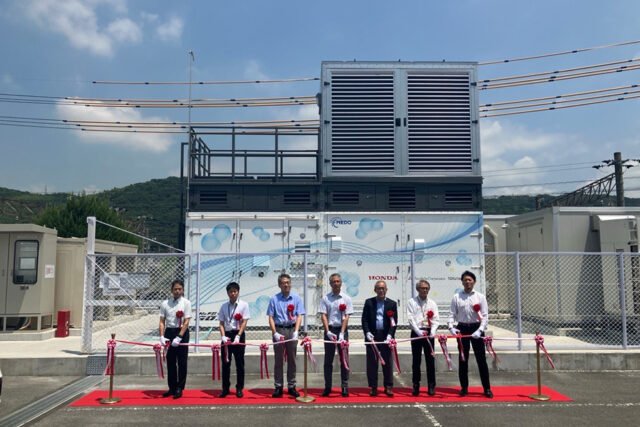On August 1, 2025, Honda Motor Co., Ltd. unveiled the start of a landmark demonstration project in Shunan City, Yamaguchi Prefecture, Japan. In collaboration with Tokuyama Corporation and Mitsubishi Corporation, Honda brought to life a stationary fuel cell power station engineered to reuse automotive-grade fuel cell systems and tap into by‑product hydrogen. This initiative is aimed at powering a distributed data centre and heralds a major stride in the intersection of hydrogen energy and digital infrastructure.
Table of Contents

Turning Waste into Power: A Clever Circular Model
At the heart of the project lies a bold vision: to deploy by‑product hydrogen, generated through Tokuyama’s salt‑water electrolysis operations, as a clean energy source. Simultaneously, Honda repurposes fuel cell systems previously used in its fuel cell electric vehicles (FCEVs), giving them a second life as part of its stationary power station. This dual‑use model significantly reduces both environmental impact and upfront costs for station operators.
Honda, Tokuyama, and Mitsubishi—since June 2023—have been working under the NEDO‑backed “Regional Hydrogen Utilization” project. Now, with the commissioning of the demonstration site, they aim to explore whether this hybrid approach can reduce the financial and carbon burdens of stationary FC installations.
Operational Flexibility: Smarter Power Delivery
The demonstration uses an advanced Energy Management System (EMS) to alternate among various energy sources:
- Stationary FC power station utilizing by‑product hydrogen
- Grid electricity
- Battery Energy Storage System (BESS)
- Renewable energy integration
Through this layered architecture, Honda will test four usage modes:
- Emergency backup power
- Off‑grid primary supply
- Peak‑shaving during demand surges
- Grid balancing and potential energy export back to the grid
The project’s flexibility includes modular output configurations—from 250 kW increments up to utility‑scale power—with multiple layouts adaptable to site constraints.

Why It Matters: Green Transformation Meets Digital Transformation
Honda positions this project at the convergence of two powerful global trends:
- Green Transformation (GX): delivering low‑carbon power to critical infrastructure.
- Digital Transformation (DX): enabling data centres and local businesses to operate with cleaner, more resilient power sources.
With data demands surging—driven by generative AI, cloud services, and IoT—the need for reliable, clean backup and on‑site power is intensifying. Honda’s demonstration could be a template for decarbonising the backbone of digital society.
Building on Prior Momentum: From Torrance to Shunan
Honda’s journey in stationary fuel cell generation began in March 2023, with the activation of a 500 kW fuel cell power station on its Torrance, California, campus. That installation repurposed Clarity FCEV fuel cell systems to support backup power for Honda’s data centre, leveraging flexible modular designs that scale in 250 kW steps and adapt to installation contexts.
That early prototype established technical and commercial feasibility. Now, the new Shunan facility doubles down with by‑product hydrogen and reused automotive fuel cells—integral to Honda’s plans for next‑generation deployment across factories, data centres, and commercial installations worldwide.
Scaling Up the Fuel Cell Ecosystem
Honda envisions a multi‑domain hydrogen ecosystem built around its next‑generation fuel cell module, slated for commercial production in FY 2027, with broader deployment to follow:
- FCEVs, including a plug‑in CR‑V e:FCEV in North America and Japan by 2024.
- Commercial vehicles and heavy trucks, such as Honda’s Class 8 Fuel Cell Truck Concept on public‑road demos.
- Stationary power stations, like the Shunan project, using modular FC units up to several megawatts.
- Construction machinery, including excavators and loaders, requires a heavy throughput.
Honda’s roadmap includes scaling from 2,000 fuel cell modules per year in the mid‑2020s to 60,000 by 2030, and later to a few hundred thousand annually by mid‑2030s.
Challenges on the Horizon
Despite clear technical progress, Honda has recently faced headwinds in its hydrogen production expansion. Plans to build a dedicated fuel cell module manufacturing plant in Moka City, Tochigi Prefecture, have been scaled back. The originally intended production capacity—30,000 units per year by FY 2028—has been reduced to 20,000 units, and the launch has been delayed, with no firm new date announced.
The shift reflects the volatile global hydrogen market, adoption uncertainty, and financial pressures. Still, Honda emphasises that demonstration projects like Shunan provide a lower‑cost, flexible path to broader adoption.

Looking Ahead: Strategic and Environmental Implications
This demonstration offers a scalable model for energy generation that aligns with rising demand for greener, decentralised, and resilient power infrastructure. Specifically:
- Local data centres and municipal facilities can reduce reliance on fossil‑fuel generators and the grid.
- Commercial operating models gain flexibility by blending reused fuel cells, hydrogen streams, and storage.
- Economies of scale emerge as surplus hydrogen feedstock and recycled FCEV modules lower deployment costs.
- Policy alignment is strong: centred on Japan’s hydrogen strategy under NEDO and broader GX/DX ambitions.
If successful, the demonstration may signal a larger shift toward hydrogen‑powered microgrids, auxiliary back‑up systems, and smarter integration of hydrogen into the digital economy.
Key Takeaway
Honda’s joint demonstration in Shunan City marks a strategic pivot in its hydrogen roadmap:
- Repurposes existing automotive fuel cell systems
- Uses very low‑carbon hydrogen from industrial by‑products
- Integrates multiple power sources via EMS to enable peak‑shaving, grid balancing, and backup supply
- Supports Japan’s hydrogen and digital transformation agendas
While full commercial rollout timelines are subject to broader market conditions (and Honda’s scaled‑back manufacturing plans), this project showcases a practical, modular, and environmentally progressive design, positioning Honda at the forefront of stationary hydrogen power innovation.
Join Our Social Media Channels:
WhatsApp: NaijaEyes
Facebook: NaijaEyes
Twitter: NaijaEyes
Instagram: NaijaEyes
TikTok: NaijaEyes















![Tragic Incident: Fans of Seyi Vibez Die in Fatal Accident After Electrifying Lagos Concert [VIDEO] Seyi Vibez](https://naijaeyesblog.com/wp-content/uploads/2025/08/Seyi-Vibez-180x135.avif)
























